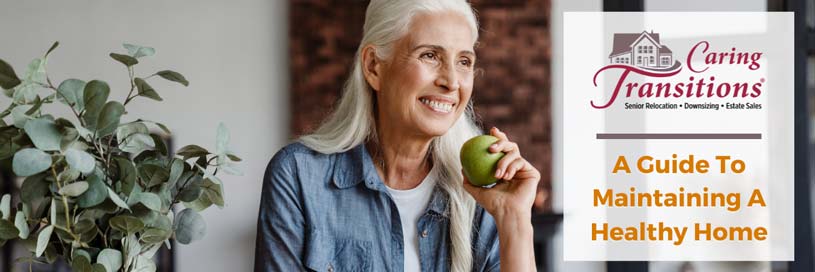
The clutter is cleared and you’ve spent time organizing the space to fit your style… But where do you go from here? Everyone wants a place to call home, a safe space where we can be ourselves and unwind after a long day of hard work. Going forward, how can you maintain your home in a healthy and safe manner to keep your peace of mind?
What even constitutes a healthy home? According to the National Center for Healthy Housing, a healthy home is housing that is designed, constructed, maintained, and rehabilitated in a manner that is conducive to good occupant health.
Keep these 6 principles of a healthy home from the NCHH in mind as you move forward;
- KEEP IT DRY - Moisture in homes has been linked to a wide range of health problems, from respiratory problems to lead poisoning, from accidental injury to asthma. Moisture creates a favorable environment for mites, rodents, molds, and roaches, all of which are associated with asthma.
- KEEP IT CLEAN - A clean home helps ensure that people are not exposed to contaminants and chemicals, and that pests don’t have food, water, and a place to live.
- KEEP IT PEST-FREE - Studies show that there is a causal relationship between mice and cockroach exposure and asthma episodes in children with asthma. Integrated Pest Management (IPM) addresses the issue of pests holistically, without using toxic pesticides.
- KEEP IT SAFE - Most childhood injuries occur at home. Falls, poisoning, and burns are the three most common residential injuries for children.
- KEEP IT CONTAMINATE-FREE - Homes have many potential contaminant exposure risks, including lead, radon, pesticides, volatile organic compounds (VOC’s), tobacco smoke, carbon monoxide, and asbestos. Children are more likely to be exposed to lead, radon, asbestos, tobacco smoke and other toxicants in higher concentration in the home than outside.
- KEEP IT VENTILATED - Studies show that respiratory health is related to access to fresh air, increasing a home’s fresh air supply reduces moisture, improves air quality, and increases respiratory health.
What Can You Do?
- Don’t wear shoes indoors. Shoes track dirt, allergens, germs, and other pollutants indoors.
- Avoid air fresheners. Air fresheners and candles release volatile organic compounds, a leading contributor to indoor air pollution.
- Resolve water leaks. Moisture promotes the growth of mold and mildew. Inspect common culprits including pipe joints, aging appliances, and HVAC units, and clogged gutters to identify the source of water damage and hire pros to stop water intrusion.
- Embrace natural ventilation. Opening the windows is one of the best ways to refresh your home. Installing high-quality window screens and screen doors allows moisture, odors, and pollutants to escape without letting insects in.
- Choose non-toxic pest and weed control. Non-toxic methods can be just as effective as pesticides and herbicides.
- Address sewer issues. Odors and wet, sunken patches make the backyard an unpleasant place to spend time. Unfortunately, they’re also signs of sewer line problems, meaning you’ll need to call a plumber.
- Install a carbon monoxide detector. Place a carbon monoxide detector near the kitchen if you have gas appliances and never use a gas range for heating a home.
- Filter drinking water. Faucet-mounted and under-sink filters reduce contaminants in drinking water. If you have a fridge with a built-in water dispenser, change the filter regularly.
- Prevent pests problems. Put away food, wipe counters after use, and cover trash cans to keep pests at bay. Choose closed baits and traps when pest control projects are necessary.
- Improve kitchen ventilation. Kitchens without ventilation trap contaminants. Ductless range hoods allow cleaner cooking in homes where installing ductwork isn’t an option and are much more affordable as well.
Want a checklist to help you keep track? Here you’ll find a list of annual maintenance to perform around the house, directly from the NCHH website!
Sources:
- Healthy Homes for Healthy Families | HUD.gov / U.S. Department of Housing and Urban Development (HUD)
- 8 Elements of a Green and Healthy Home - Green & Healthy Homes Initiative (greenandhealthyhomes.org)
- What is a Healthy Home? | Healthy Homes Coalition
-
healthy-homes-checklist.pdf (hhs.gov)
- How to Design a Healthy Home for Your Parents | My desired home
- 14 Ways to Create a Healthier Home for Your Family (sedona.biz)
- 10 Tips To Safely Organize The Home For Mom & Dad > Caring Transitions (caringtransitionsaugusta.com)
- The Principles of a Healthy Home | NCHH
- Healthy Homes Guide to Cleaning and Disinfection | NCHH
- NCHHMaintCheckList.qxd (hud.gov)